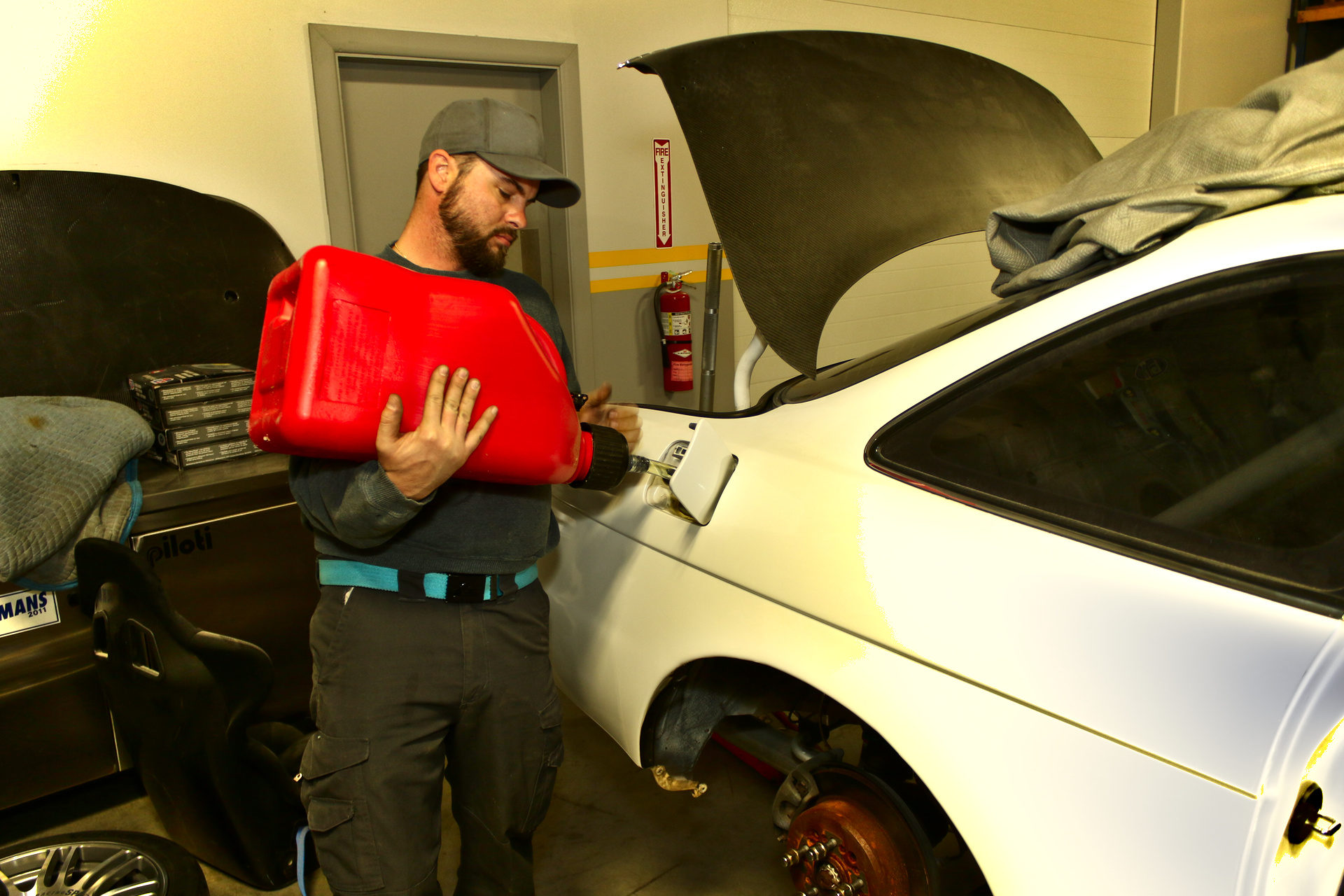,

ECU Manager and the Haltech ECU provide a robust thermo fan control mechanism. Pick the sensor on which to base the control, and then set your on and off values. Why are they different? Think about if you only had one temperature value for on vs. off. If the temperature sensor reading fluctuated a little bit around that value, the ECU would be constantly turning the output on (when above) and then back off (when below) and then on again. This is really bad for things like fans.
You also see that you can adjust the idle parameters in relation to the thermo fan. In some cases, fans draw so much current that they load down the engine and alternator, which would drop the engine idle. The idle-up parameters can be used to ensure that the extra electrical load from the fan (and therefore engine load via the alternator) doesn’t cause idling issues.
How did we get to our temperature values? A little bit of trial and error. While we’re skipping ahead a bit, story wise, we ended up driving the SC300 home from the shop on a fairly warm day. With the original temperature settings, we found that the fan would come on but the engine would never get cool enough for the fan to go off.
We decided to set the fan off temperature to a degree or two above where the fans were able to cool the engine to. In other words, with the engine warm, and the fans on, the temperature would bottom out around 186F. So, we set the off temperature to 189F.
Then we set the fan on temperature to something a bit warmer than that. In our case, we arbitrarily chose 6 degrees higher than that, at 195F.

We needed to tweak the idle configuration because it wasn’t working.
Toyota used a number of different idle control mechanisms over the years. Several of them use a stepper-type motor. But there were a few different designs, and each is controlled differently. Ed Senf had come by when we first got the car idling and running to check some of the basic parameters. Well, in reality he just happened to be nearby and I begged him to take a peek. He noticed that the idle control wasn’t working.
What do you mean it wasn’t working? The car was idling, right? A look at the ECU Manager idle page showed that the ECU was attempting to adjust the engine’s idle RPM, but the parameters were pegged to max and the engine idle wasn’t changing. While the ECU was trying to get the idle down to 750RPM (for example), the car was still idling at 1000RPM and the correction percentages were maxed out. It seemed like the idle control motor wasn’t actually being controlled.
At first we guessed that maybe the stepper was gunked up and couldn’t move. Some cleaning yielded no result. What we found out was that when the ECU is powered up it will sweep the stepper motor through its range of motion to find out where “zero” is. Nothing was happening.
We cycled through a few of the different stepper motor settings and power cycled the ECU until we found one that worked. We heard the idle control motor making noise! It was fixed. Apparently the 1JZ idle motor is a little different than what Haltech expects for the 2JZ.
Basic power circuitry? Programmed and working.
Basic engine function? Check.
We had validated that the wheel speed sensor inputs were working, but they needed to be calibrated and that could only happen with the car rolling at a known speed. The same goes for the gear detection that the Haltech Elite 2500 is capable of. What device did we have that would know the vehicle speed? Our data logger. So, it was time to work on the Autosport Labs RaceCapture/Pro MK2.
But you’ll have to wait until the next segment to learn about that.



